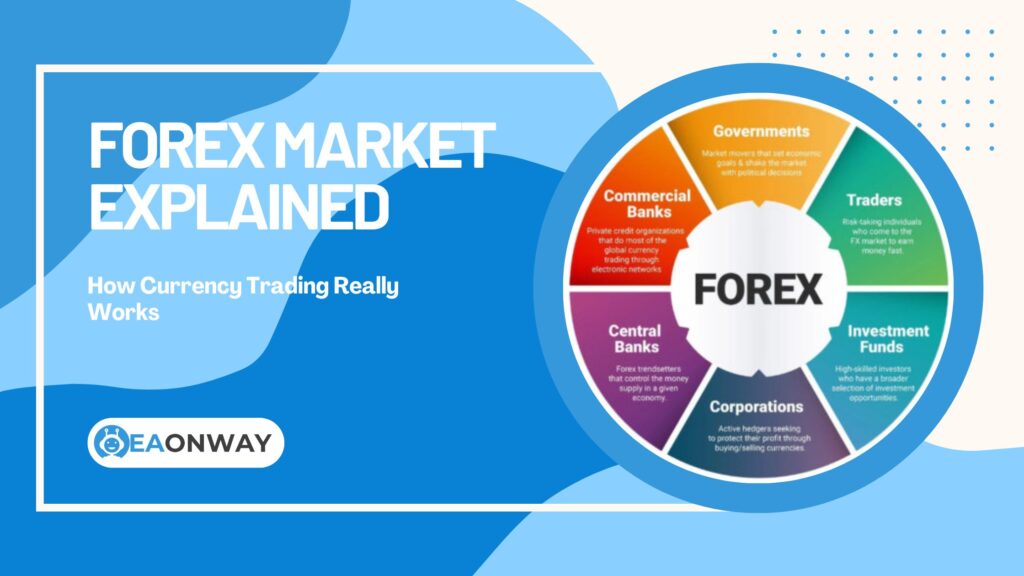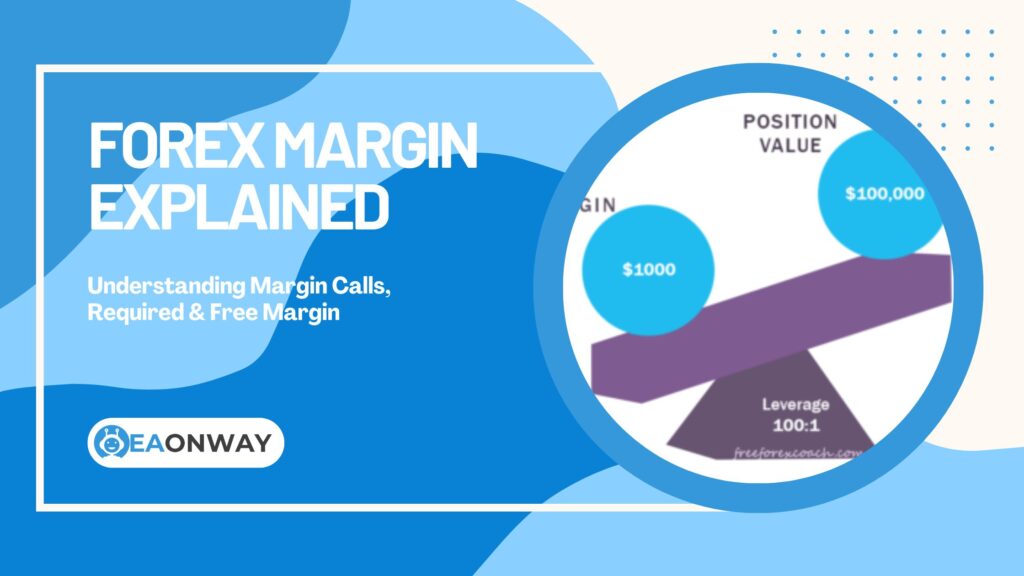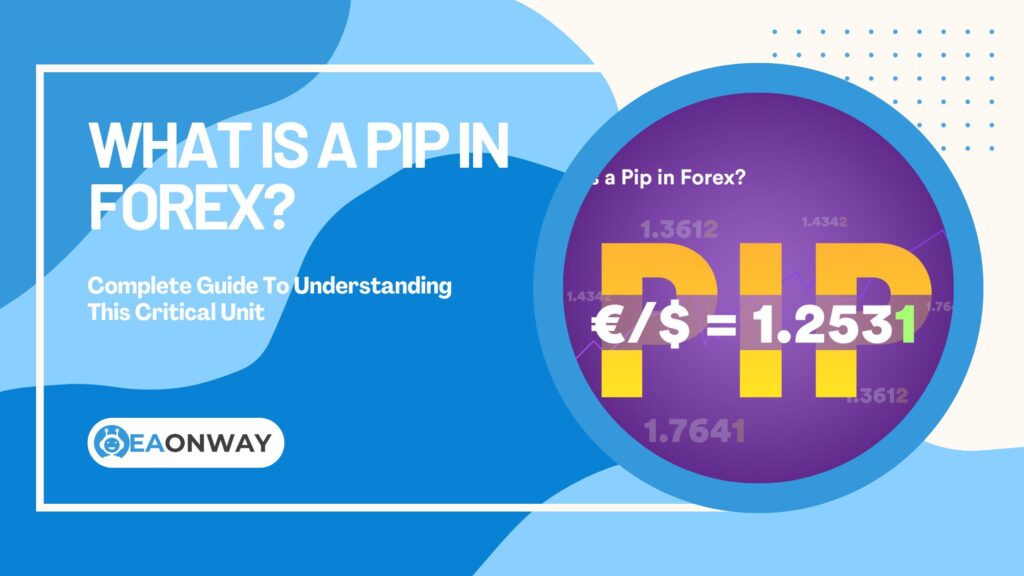Major Currency Pairs: Your Essential Forex Trading Guide
Understanding Major Currency Pairs is fundamental if you’re exploring the vast Foreign Exchange Market, often referred to as Forex or FX. Have you ever wondered which currency pairs dominate global trading and why? Grasping the concept of these pairs is the first step towards navigating the complexities of Forex trading, whether you plan to trade manually or explore automated solutions like Forex Expert Advisors (EAs).
This comprehensive guide delves deep into the world of Major Currency Pairs. We’ll explain precisely what they are, how they are quoted, and why the US Dollar plays such a pivotal role. You’ll learn about the specific characteristics that set these pairs apart, the economic and geopolitical factors influencing their movements, and how they differ from minor and exotic pairs. Crucially, we will also highlight the inherent risks involved, helping you approach the Forex market with informed awareness and realistic expectations.
Key Takeaways
Here’s a quick summary of the essential points covered in this guide:
- Definition: Major Currency Pairs are the most traded pairs in the Forex market, always involving the US Dollar (USD) paired with another major global currency.
- The Majors List: The commonly recognized majors include EUR/USD, USD/JPY, GBP/USD, USD/CHF, AUD/USD, USD/CAD, and often NZD/USD.
- Key Characteristics: They typically feature high liquidity (ease of trading), lower spreads (transaction costs), and abundant available information.
- USD Dominance: The US Dollar’s central role stems from its status as the world’s primary reserve currency and its use in global trade and commodity pricing.
- Influencing Factors: Movements are driven by economic data releases, central bank policies (like interest rate decisions), geopolitical events, and overall market sentiment.
- Risk Warning: Despite their popularity and liquidity, trading Major Currency Pairs involves significant risk due to market volatility and the effects of leverage. Profit is never guaranteed, and losses can exceed deposits.
What Exactly Are Currency Pairs in Forex?
Before diving into the “majors,” let’s clarify what a currency pair is. In the Foreign Exchange Market, currencies are always traded in pairs. When you buy or sell a currency pair, you are simultaneously buying one currency and selling the other. Think of it like exchanging money at an airport kiosk, but on a massive, decentralized global scale operating 24 hours a day, five days a week.
How Are Currency Pairs Quoted?
Currency pairs are quoted using two prices: the bid and the ask price. The bid price is the price at which a broker is willing to buy the base currency from you in exchange for the quote currency. The ask price (or offer price) is the price at which the broker will sell the base currency to you in exchange for the quote currency. The difference between these two prices is known as the spread, which represents a primary transaction cost in Forex trading.
For example, if the EUR/USD quote is 1.1050 / 1.1052:
- The bid price is 1.1050 (the price you get if you sell EUR/USD)
- The ask price is 1.1052 (the price you pay if you buy EUR/USD)
- The spread is 0.0002, or 2 pips (a ‘pip’ is a standard unit of movement, often the fourth decimal place for most pairs)
Understanding Pip Value is essential for calculating potential profit or loss as it represents the smallest price movement in a currency pair.
What Do Base and Quote Currency Mean?
Every currency pair has a Base Currency and a Quote Currency. The base currency is the first currency listed in the pair (e.g., EUR in EUR/USD), and the quote currency (or counter currency) is the second one listed (e.g., USD in EUR/USD). The exchange rate tells you how much of the quote currency is needed to buy one unit of the base currency.
So, for EUR/USD at 1.1050:
- Base Currency: EUR
- Quote Currency: USD
- Meaning: It costs 1.1050 US Dollars to buy 1 Euro
Grasping the base and quote currency relationship is fundamental to knowing whether you want to buy (go long) or sell (go short) a pair based on your market outlook. If you believe the Euro will strengthen against the US Dollar, you would buy EUR/USD. If you think the Euro will weaken, you would sell EUR/USD.
Defining Major Currency Pairs
Now, let’s focus on the stars of the Forex show: the Major Currency Pairs. These are the heavyweights of the foreign exchange world, accounting for the lion’s share of daily trading volume.
What Makes a Currency Pair “Major”?
A currency pair qualifies as “major” based on specific criteria, primarily involving the US Dollar and high trading volume. These pairs always include the USD on one side, paired with the currency of another major, highly developed economy like the Eurozone, Japan, the UK, Switzerland, Australia, Canada, or New Zealand. Their immense popularity translates into high market liquidity.
The key characteristics are:
- Inclusion of the US Dollar (USD): This is the defining feature
- High Trading Volume: They are the Most Traded Currency Pairs globally. According to the Bank for International Settlements (BIS) Triennial Central Bank Survey, transactions involving the USD on one side continued to account for 88% of all trades in 2022 (Source: BIS Triennial Central Bank Survey, 2022)
- High Liquidity: The high volume means it’s generally easier to buy or sell large quantities without causing significant price fluctuations
- Representation of Major Economies: They link the US economy with other significant global economic powerhouses
Why Does the US Dollar Feature So Prominently?
The US Dollar’s dominance in major pairs isn’t accidental. It’s rooted in its unique position in the global financial system:
- World’s Primary Reserve Currency: Many central banks, governments, and institutions hold significant amounts of USD in their foreign exchange reserves. The IMF’s COFER data regularly shows the USD comprising the largest share of global allocated reserves (Source: IMF Currency Composition of Official Foreign Exchange Reserves (COFER))
- International Trade Settlement: A vast amount of global trade, including commodities like oil and gold, is priced and transacted in USD
- Global Financial Benchmark: Many international loans, bonds, and derivatives are denominated in USD
- Economic Size and Stability: The US remains the world’s largest economy, making its currency intrinsically important in global finance
This central role means that economic data and policy decisions from the United States often have a ripple effect across the entire Forex market, significantly impacting all Major Currency Pairs.
What Are the Major Currency Pairs in Forex?
While definitions can slightly vary, the following are universally recognized as the Major Currency Pairs. Understanding their individual characteristics is helpful for anyone looking to Learn Forex Trading.
EUR/USD (The Euro / US Dollar)
- Nickname: Fiber
- Description: This pair pits the currency of the Eurozone against the US Dollar. It is consistently the most traded currency pair in the world, reflecting the massive trade and investment flows between the world’s two largest economic areas.
- Characteristics: Generally exhibits high liquidity and relatively tight spreads. Its movements are heavily influenced by interest rate decisions from the European Central Bank (ECB) and the US Federal Reserve (Fed), as well as economic data (like GDP, inflation, employment) from both regions.
- Trading Volume: Accounts for approximately 28% of daily forex trading volume, making it the most liquid pair in the market.
USD/JPY (The US Dollar / Japanese Yen)
- Nickname: Gopher
- Description: This pair compares the US Dollar to the Japanese Yen. It’s the second most traded pair globally.
- Characteristics: The Yen is often considered a “safe-haven” currency, meaning investors may flock to it during times of global economic uncertainty, causing USD/JPY to fall. Monetary policy from the Bank of Japan (BoJ), which has historically kept interest rates extremely low, is a major driver. Japanese economic indicators and global risk sentiment also play significant roles.
- Correlation: Often shows correlation with US treasury yields – when yields rise, USD/JPY typically strengthens.
GBP/USD (The British Pound / US Dollar)
- Nickname: Cable (originating from the transatlantic telegraph cable used to transmit exchange rates in the 19th century)
- Description: This pair features the British Pound Sterling against the US Dollar. It has a rich history and remains one of the most popular pairs.
- Characteristics: Known for its potential volatility compared to EUR/USD. Movements are influenced by Bank of England (BoE) policies, UK economic data (inflation, GDP, employment), political developments (especially post-Brexit), and US factors.
- Volatility: Typically experiences more pronounced price swings than EUR/USD, offering both greater risk and potential reward.
USD/CHF (The US Dollar / Swiss Franc)
- Nickname: Swissy
- Description: This pair matches the US Dollar against the Swiss Franc.
- Characteristics: The Swiss Franc, like the Yen, is often viewed as a safe-haven currency due to Switzerland’s political stability, neutrality, and strong financial system. Intervention by the Swiss National Bank (SNB) to manage the Franc’s value can be a significant factor. It often moves inversely to EUR/USD due to the close economic ties between Switzerland and the Eurozone.
- Historical Note: In January 2015, the SNB suddenly abandoned its currency cap against the Euro, causing extreme volatility that serves as a reminder of potential central bank intervention risk.
AUD/USD (The Australian Dollar / US Dollar)
- Nickname: Aussie
- Description: This pair compares the Australian Dollar to the US Dollar.
- Characteristics: The Australian Dollar is considered a “commodity currency” because Australia is a major exporter of raw materials (like iron ore, coal). Commodity price trends, particularly those related to China (Australia’s largest trading partner), significantly impact this pair. Reserve Bank of Australia (RBA) interest rate decisions and domestic economic performance are also key drivers.
- Risk Sentiment Indicator: Often rises during periods of global economic optimism and falls during uncertainty, making it a useful barometer of market risk appetite.
USD/CAD (The US Dollar / Canadian Dollar)
- Nickname: Loonie (after the bird featured on the Canadian one-dollar coin)
- Description: This pair involves the US Dollar against the Canadian Dollar.
- Characteristics: Like the Aussie, the Canadian Dollar is a commodity currency, heavily influenced by the price of oil, a major Canadian export. Economic data from both Canada and the US (due to close trade ties) and Bank of Canada (BoC) monetary policy are critical factors.
- Oil Price Sensitivity: Often shows strong correlation with crude oil prices – when oil prices rise, USD/CAD typically falls (CAD strengthens).
NZD/USD (The New Zealand Dollar / US Dollar)
- Nickname: Kiwi
- Description: Though sometimes grouped with minors, the Kiwi is frequently considered alongside the majors due to its relatively high liquidity and significance. It pairs the New Zealand Dollar with the US Dollar.
- Characteristics: Another commodity currency, influenced by agricultural exports (particularly dairy). Reserve Bank of New Zealand (RBNZ) policy, domestic economic health, and global risk sentiment affect its value. It often moves in correlation with AUD/USD.
- Dairy Price Influence: Changes in global dairy prices can have a noticeable impact on NZD value, unique among major currencies.
Understanding the nuances of each pair, including typical pip value fluctuations and optimal lot size forex considerations relative to account capital and risk tolerance, is part of developing a sound trading approach.
What Are the Key Characteristics of Major Currency Pairs?
The “major” status brings several distinct characteristics that traders should be aware of:
Why Is High Liquidity Important for Traders?
High liquidity is perhaps the most significant advantage. It refers to the ease with which a currency pair can be bought or sold in the market without causing a substantial change in its price. For traders, this generally means:
- Efficient Execution: Orders are more likely to be filled quickly and at prices close to the quoted market rate
- Ability to Trade Larger Volumes: The market can absorb larger orders without significant price slippage
- Consistent Availability: Trading is possible around the clock during the trading week due to continuous global participation
- Lower Transaction Costs: Competition among market makers and high volume typically result in tighter spreads
This liquidity is particularly valuable during volatile market conditions, where less liquid instruments might experience extreme price gaps or execution difficulties.
Why Are Spreads Generally Tighter for Major Pairs?
The spread (the difference between the bid and ask price) represents a direct cost of trading. Due to the immense trading volume and fierce competition among brokers and liquidity providers for Major Currency Pairs, the spreads are typically much tighter (lower) compared to minor or exotic pairs.
For example, EUR/USD might have a spread of just 0.1-1 pip with many brokers, while an exotic pair like USD/TRY (US Dollar/Turkish Lira) might have spreads of 20+ pips. This difference becomes significant with frequent trading or larger position sizes.
Lower spreads mean:
- Lower implicit transaction costs each time you enter or exit a trade
- Higher net potential profit (all else being equal)
- Greater efficiency for short-term trading strategies
However, remember that spreads can widen during periods of low liquidity (e.g., overnight rollovers, major news events) or high volatility.
How Does Information Abundance Affect Trading Decisions?
Given their importance to the global economy, Major Currency Pairs are constantly under scrutiny. This means traders have access to a wealth of information:
- Comprehensive News Coverage: Major financial news outlets continuously report on factors affecting these currencies
- Regular Economic Data Releases: GDP, inflation, employment figures, and other indicators are widely anticipated and analyzed
- Central Bank Communications: Statements, minutes, and press conferences from the Fed, ECB, BoJ, BoE, etc., provide insights into future policy direction
- Extensive Technical Analysis: Charting platforms and analytical tools extensively cover these pairs, with many pre-built indicators optimized for majors
- Research Reports: Investment banks and financial institutions regularly publish outlooks and analyses focused on major pairs
While this abundance of information is helpful, it can also lead to “analysis paralysis.” More information doesn’t automatically equate to better trading decisions; interpreting it correctly within a sound strategy is key.
When Is Market Activity Highest for Major Pairs?
The Forex market operates 24 hours a day, from Sunday evening to Friday evening (GMT), thanks to the overlap of major financial centers. However, liquidity and volatility are not uniform throughout this period:
- London-New York Overlap (13:00-17:00 GMT): Generally the most active period with highest volume and potentially largest price movements
- Asian Session (00:00-09:00 GMT): Typically lower volatility for EUR/USD and GBP/USD, but more active for pairs including JPY and AUD
- European Session (07:00-16:00 GMT): Activity picks up significantly, especially for EUR/USD and GBP/USD
- North American Session (12:00-21:00 GMT): Important US economic data often released during this time
Understanding these activity windows can help traders plan when to trade based on their strategy requirements for volatility and liquidity.
What Influences Major Currency Pair Movements?
Understanding What is Forex Trading involves recognizing the diverse factors that cause exchange rates to fluctuate. For Major Currency Pairs, these drivers are numerous and interconnected:
Which Economic Indicators Have the Greatest Impact?
Economic data releases provide insights into the health of an economy and can significantly impact its currency’s value. Key indicators include:
- Gross Domestic Product (GDP): Measures the total value of goods and services produced. Stronger growth often boosts a currency.
- Inflation (CPI/PPI): The Consumer Price Index (CPI) and Producer Price Index (PPI) measure price changes. Higher-than-expected inflation can lead central banks to raise interest rates, potentially strengthening the currency.
- Employment Data: Reports like the US Non-Farm Payrolls (NFP) are closely watched. Strong job growth suggests economic strength, potentially boosting the USD. While specific numerical impacts vary, NFP releases regularly cause significant market volatility.
- Retail Sales: Indicate consumer spending strength, often correlating with future economic growth.
- Trade Balance: The difference between a country’s exports and imports can affect currency demand.
- Manufacturing & Services PMI: Purchasing Managers’ Indexes gauge business activity and sentiment, providing early signals of economic direction.
Market reactions depend not just on the data itself, but on how it compares to economists’ expectations and previous readings. The surprise element often drives the most significant price movements.
How Do Central Bank Policies Affect Currency Values?
Central banks wield enormous influence over currency values through monetary policy:
- Interest Rates: This is arguably the most significant driver. Higher interest rates tend to attract foreign investment (seeking better returns), increasing demand for the currency and causing it to appreciate (and vice-versa). Decisions by the Fed, ECB, BoJ, BoE, SNB, RBA, BoC, and RBNZ are paramount.
- Monetary Policy Statements: Forward guidance, inflation targets, and commentary on economic outlook provided alongside interest rate decisions shape market expectations.
- Quantitative Easing (QE) / Tightening (QT): QE (injecting liquidity by buying assets) generally weakens a currency, while QT (reducing liquidity) tends to strengthen it. Central bank reports often detail the scale and impact of these programs (e.g., ECB Asset Purchase Programmes).
- Intervention: Direct buying or selling of currencies by central banks can cause immediate and significant price movements.
The market often reacts as much to anticipated future policy changes as to actual announcements, making central bank communication critically important.
What Geopolitical Events Can Move Major Currency Pairs?
Politics and global events play a crucial role:
- Elections: Uncertainty surrounding elections can cause volatility. The outcome can lead to policy shifts impacting the economy and currency.
- Trade Relations: Trade wars, tariffs, or new agreements significantly affect currencies of involved nations (e.g., US-China trade tensions).
- International Conflicts & Instability: Major conflicts or political instability can drive investors towards perceived “safe-haven” currencies (USD, JPY, CHF) and away from those perceived as riskier.
- Government Policies: Fiscal policies (government spending and taxation) also influence economic growth and currency value.
- Regulatory Changes: New financial regulations or capital control measures can impact currency flows and valuations.
These events are often less predictable than scheduled economic data releases, making them particularly challenging for traders to navigate.
How Does Market Sentiment Affect Currency Movements?
Often overriding fundamentals in the short term is overall market sentiment:
- Risk-On: When investors feel optimistic and confident, they tend to buy riskier assets, including currencies of commodity-producing countries (AUD, NZD, CAD) and emerging markets. Demand for safe havens may decrease.
- Risk-Off: During times of fear or uncertainty, investors flee to safety, increasing demand for USD, JPY, and CHF, while selling off riskier assets.
- Market Positioning: When too many traders position for the same outcome, markets can become “overcrowded,” potentially leading to sharp reversals when those positions unwind.
- Technical Factors: Price patterns, support/resistance levels, and other technical analysis factors can drive short-term movements independent of fundamentals.
Understanding sentiment requires monitoring multiple sources, including market commentary, positioning data, volatility indexes, and cross-asset correlations (like relationships between stocks, bonds, and currencies).
What’s the Difference Between Major, Minor, and Exotic Currency Pairs?
While majors dominate, it’s essential to know about other categories to fully grasp the Foreign Exchange Market landscape.
How Are Minor Currency Pairs (Crosses) Different from Majors?
Minor currency pairs, also known as cross-currency pairs or simply “crosses,” are pairs that feature major global currencies but do not include the US Dollar. Examples include:
- EUR/GBP (Euro vs. British Pound)
- EUR/JPY (Euro vs. Japanese Yen)
- GBP/JPY (British Pound vs. Japanese Yen)
- AUD/NZD (Australian Dollar vs. New Zealand Dollar)
- CHF/JPY (Swiss Franc vs. Japanese Yen)
Key differences from major pairs include:
- No Direct USD Component: While USD rates indirectly influence their pricing
- Moderately Lower Liquidity: Still highly tradable but with typically less volume than majors
- Slightly Wider Spreads: Higher transaction costs but still reasonable
- Different Trading Characteristics: Some crosses have unique patterns (e.g., GBP/JPY known for volatility)
- Triangular Arbitrage Relationship: Cross rates are mathematically derived from their USD pairs
Trading crosses can offer opportunities when you have a strong view on two non-USD currencies relative to each other, rather than against the USD.
What Makes Exotic Currency Pairs Different?
Exotic currency pairs consist of one major currency paired with the currency of an emerging or smaller, less developed economy. Examples include:
- USD/TRY (US Dollar vs. Turkish Lira)
- EUR/PLN (Euro vs. Polish Zloty)
- USD/ZAR (US Dollar vs. South African Rand)
- GBP/MXN (British Pound vs. Mexican Peso)
- USD/SGD (US Dollar vs. Singapore Dollar)
Exotics are characterized by:
- Significantly Lower Liquidity: Much less trading volume compared to majors or minors
- Wide Spreads: Transaction costs can be 10-20 times higher than majors
- High Volatility: Prone to very sharp and unpredictable price swings
- Greater Gaps: More likely to experience price gaps between closing and opening prices
- Local Market Influence: Often heavily affected by local politics and economic policies
- Intervention Risk: Central banks in emerging markets may intervene more frequently in currency markets
- Capital Control Risk: Some countries impose restrictions on currency flows that can impact trading
These characteristics make exotic pairs generally more challenging and potentially more costly to trade, especially for beginners.
Why Should Beginners Understand the Differences Between Pair Categories?
Many resources suggest beginners start with Major Currency Pairs when they Learn Forex Trading. Understanding the rationale and limitations of this advice is important:
Potential Benefits of Starting with Majors:
- Higher Liquidity: Easier order execution with less slippage
- Tighter Spreads: Lower implicit transaction costs
- More Information: Abundant news and analysis available
- Lower Overnight Costs: Often have lower swap rates for positions held overnight
- Better Demo and Backtesting Data: Historical data quality is typically superior
Critical Warning:
Familiarity and liquidity do not equate to safety or ease of profit. Trading majors is still highly complex and carries substantial risk. The more widely traded nature of majors often means they are efficiently priced, potentially making consistent profit difficult without a well-tested strategy. The perceived “simplicity” can be dangerously misleading.
Understanding all categories helps traders make informed decisions about which pairs best match their:
- Trading strategy (trend-following, range trading, etc.)
- Risk tolerance and capital
- Available trading hours
- Knowledge of specific economies and markets
What Are the Risks of Trading Major Currency Pairs?
It is absolutely crucial to understand that trading Forex, including Major Currency Pairs, is inherently risky. High liquidity and popularity do not eliminate the potential for significant financial loss. Here are key risks to be acutely aware of:
How Can Market Volatility Impact Your Trading?
While generally more stable than exotics, major pairs can experience significant and rapid price swings (volatility), especially around:
- Major Economic News Releases: NFP, GDP, inflation reports, and retail sales can trigger sharp movements
- Central Bank Announcements: Interest rate decisions and policy statements often cause volatility
- Geopolitical Events: Elections, international conflicts, or policy changes can create unpredictable moves
- Market Crises: During financial stress periods, even major pairs can experience extreme movements
High volatility increases risks including:
- Slippage: Orders filled at prices worse than expected
- Stop-Loss Failures: In extremely fast markets, stop-losses may execute at prices significantly worse than specified
- Gap Risk: Prices can “gap” or jump between trading sessions, bypassing your intended exit levels
- Emotional Decision-Making: Volatility can trigger fear or greed responses leading to poor trading decisions
To manage volatility risk, consider using appropriate position sizing, placing stops at logical technical levels rather than arbitrary price points, and potentially reducing exposure during known high-impact events.
Why Is Leverage Considered a Double-Edged Sword?
Leverage in Forex allows traders to control a large position size with a relatively small amount of capital. For example, 100:1 leverage means you can control $100,000 worth of currency with just $1,000 in your account. This magnification works in both directions:
- Magnified Profits: A 1% market move in your favor could result in a 100% return on your invested capital
- Magnified Losses: A 1% move against you could result in a 100% loss of your invested capital
The European Securities and Markets Authority (ESMA) has implemented leverage restrictions for retail clients precisely because of these risks, limiting retail traders to lower leverage ratios (Source: ESMA measures on CFDs and Binary Options).
High leverage significantly increases the risk of:
- Rapid Account Depletion: Small adverse market movements can quickly deplete trading capital
- Margin Calls: When losses approach your deposited funds, brokers may close positions or require additional capital
- Psychological Pressure: The amplified effects of market movements can lead to emotional trading decisions
- Potential to Lose More Than Deposited: In certain market conditions, losses can exceed your account balance
Prudent risk management suggests using much lower leverage than the maximum offered by brokers. Many successful traders use effective leverage of 10:1 or less, regardless of what’s available.
How Can Economic and Political Uncertainty Affect Major Pairs?
As discussed, major pairs are sensitive to a wide range of economic and political factors. This sensitivity creates several risk dimensions:
- Policy Shift Risk: Central banks can unexpectedly change interest rate policies or intervention strategies
- Data Surprise Risk: Economic releases can significantly deviate from consensus forecasts
- Political Instability Risk: Elections, referendums, or leadership changes can create market uncertainty
- Correlation Breakdown Risk: Normal relationships between currencies can temporarily break down during crises
- Contagion Risk: Problems in one economy can spread to others, affecting currency relationships
These factors can cause sudden and unpredictable shifts in exchange rates, potentially leading to losses even for well-researched trades with sound fundamental logic.
Why Might the Illusion of Simplicity Be Dangerous?
Because majors are widely discussed and traded, beginners might assume they are easier to predict or trade profitably. This is a dangerous misconception for several reasons:
- Institutional Dominance: Major banks, hedge funds, and algorithmic traders with vast resources are primary participants, creating a highly competitive environment
- Efficient Pricing: The high volume and information availability mean that prices often quickly reflect all known information
- Complex Interrelationships: Major pairs are affected by multiple economies simultaneously, creating intricate cause-effect relationships
- Technical Complexity: Chart patterns and technical levels are closely watched by many traders, potentially reducing their effectiveness
- News Sensitivity: The rapid reaction to news can make fundamental trading challenging without sophisticated analysis tools
Success requires continuous learning, adaptation, discipline, and a well-defined trading plan with strict risk management rules (like using stop-loss orders). Never assume trading majors is an easy path to profits.
Final Thoughts
Major Currency Pairs form the bedrock of the Foreign Exchange Market. Understanding what they are (USD-based pairs like EUR/USD, USD/JPY, GBP/USD, USD/CHF, AUD/USD, USD/CAD, NZD/USD), how they are quoted (Base/Quote, Bid/Ask), and their characteristics (high liquidity, lower spreads) is essential foundational knowledge for anyone interested in Forex Trading.
We’ve explored the key economic, political, and sentiment-driven factors that influence their movements and highlighted how they differ from minor and exotic pairs. The dominant role of the US Dollar results from its status as the world’s primary reserve currency and the size and importance of the US economy in global trade.
However, knowledge alone is not enough. This article emphasizes that while majors offer certain advantages like liquidity, they are far from risk-free. The potential for volatility, the dangers of leverage, and the inherent unpredictability of global markets mean that substantial financial loss is always a possibility. Approach Forex trading with caution, prioritize education and risk management, and maintain realistic expectations. Success in this arena requires discipline, continuous learning, and a deep respect for the risks involved.
Disclaimer
The information provided in this article is for educational purposes only and should not be considered financial or investment advice. EaOnWay.com does not provide investment recommendations or endorse any specific trading strategy or product. Forex trading involves substantial risk of loss and is not suitable for all investors. Leverage can work against you as well as for you. Before deciding to trade foreign exchange, you should carefully consider your investment objectives, level of experience, and risk appetite. There is a possibility that you could sustain a loss of some or all of your initial investment, and therefore you should not invest money that you cannot afford to lose. You should be aware of all the risks associated with foreign exchange trading and seek advice from an independent financial advisor if you have any doubts. Past performance is not indicative of future results.







